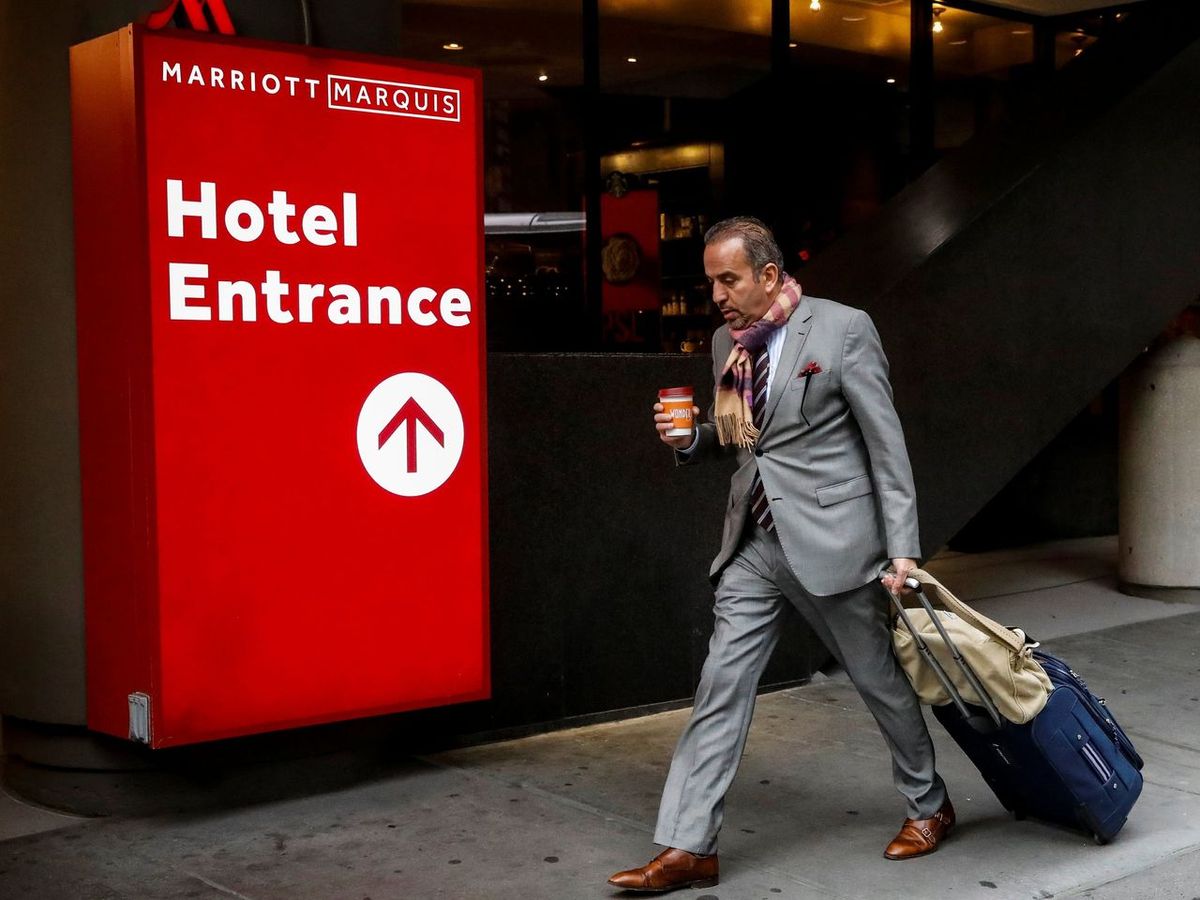Despite the coronavirus downturn, hotel chain Marriott makes big profits

A few minutes every morning is all you need.
Stay up to date on the world's Headlines and Human Stories. It's fun, it's factual, it's fluff-free.
With an unprecedented downturn in international travel, hotels, restaurants and leisure centers have all suffered from the massive drop-off in demand from travelers and vacationers.
Among those industries most affected by the coronavirus pandemic, the hospitality industry ranks high.
With an unprecedented downturn in international travel, hotels, restaurants and leisure centers have all suffered from the massive drop-off in demand from travelers and vacationers.
Marriott International, Inc., the multinational hotel and hospitality giant, is just one of the companies to see massive losses as a result of the coronavirus downturn that struck all corners of the world.
Though the pandemic is not over, Marriott’s pain might be. Unlike its competitors, the hotel chain has reported surprising profits for its third quarter and appears to be rounding the corner from its coronavirus downturn at the same time as the coronavirus proves unrelenting in places such as the United States.
But Marriott’s efforts to maintain profitability may have worked out in its favor. The company was forced into a series of large layoffs to preserve its core business and stem the flow of losses.
And though it enjoys profitability now, any return to a sustained period of normality depends on the release of a vaccine that is proven to be effective and is made widely-available.
Empty rooms
Performance in the hotel industry is measured by “revenue per available room,” or RevPAR. For the biggest multinational hotel chains, these RevPAR figures took a dramatic fall in the spring of 2020, shortly after the pandemic was first declared.
Marriott reported an 84.4% decline in RevPAR for the second quarter of 2020, its first quarterly loss in almost nine years. The company also announced a net loss in that quarter of some US$234 million, compared to a net income of US$232 million in the second quarter of 2019.
On October 23, the company laid off 673 corporate employees. These layoffs impacted roughly 17% of the company’s corporate workforce at Marriott’s headquarters in Bethesda, Maryland. In March, the company furloughed tens of thousands of its employees.
Marriott wasn’t alone in being forced to make such cuts, however. Hilton Worldwide Holdings Inc., which operates more than 6,000 properties across nearly 120 countries worldwide, reported a similar decline in RevPAR of some 81% on a year-on-year basis, with a net loss of some US$430 million in the second quarter of 2020.
As Hilton’s chief executive officer Christopher Nassetta put it in June, “never in Hilton’s 101-year history has our industry faced a global crisis that brings travel to a virtual standstill.”
Perhaps the biggest sign of this standstill were the thousands of empty rooms in hotels across the US and the world at the start of the pandemic. Between the end of March and the beginning of April 2020, some 80% of hotel rooms in the US were reportedly empty.
Turning the corner
Though the pandemic has undoubtedly wreaked havoc on the hotel industry, as well as parallel industries such as international airlines, for Marriott, the end may be in sight.
For the third quarter of 2020, the multinational hotel chain reported a profit of some US$100 million, a dramatic turnaround from its losses of over US$200 million in the second quarter.
Marriott CEO Arne Sorenson welcomed the reports by stating “while COVID-19 is still significantly impacting our business, our results for the third quarter showed continued improvement in demand trends around the world.”
The company had reported an uptick in demand in several areas of the world, most notably in mainland China, Hong Kong, Macao and Taiwan. Other regions, such as Europe and the US, reported lower occupancy rates alongside surging COVID-19 case numbers.
Competitors such as Hilton and Hyatt Hotels Corp. continued to report losses for the third quarter, of about US$79 million and US$161 million respectively.
A gradual return of demand was not the only reason behind Marriott’s third quarter comeback. Instead, a dramatic program of cost-cutting has helped return the hotel chain to profitability, even as revenue per available room remains down significantly for the year.
In addition to furloughing tens of thousands of employees, the multinational hotel chain cut executive pay, made permanent corporate layoffs and more. Small changes such as reducing available food and beverage options at certain hotels may have themselves reduced the financial break-even point by as much as 5% for Marriott.
Despite the positive quarter, the future remains uncertain for Marriott and the hotel industry at large. Occupancy rates remain low as the coronavirus surges in prime markets around the world, with Marriott’s own RevPAR down by 66% across its global portfolio.
In the age of coronavirus, hotels also face other unique challenges.
As the rebound by vacation rental platform Airbnb, Inc. from its coronavirus lows has shown, in the midst of a highly contagious virus for which there is, as yet, no vaccine, many customers appear to prefer renting entire properties instead of staying in crowded hotels.
With no vaccine expected to be widely available until the spring of 2021 at the earliest, this COVID-19-era preference for private rentals over the hotel experience may see hotels like Marriott struggle to return to pre-2020 figures.
Have a tip or story? Get in touch with our reporters at tips@themilsource.com




Comments ()